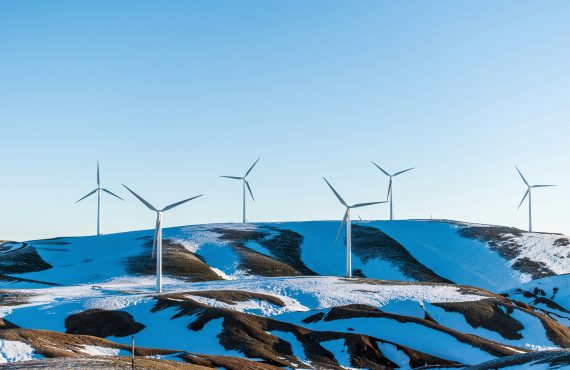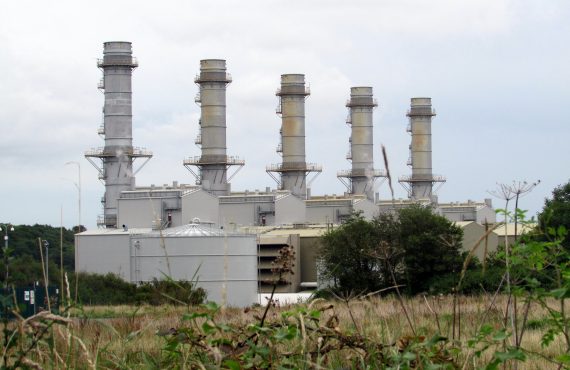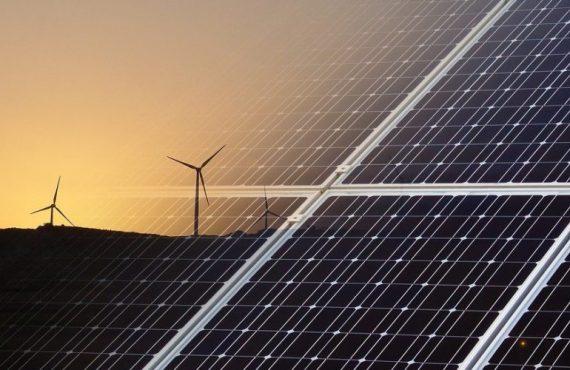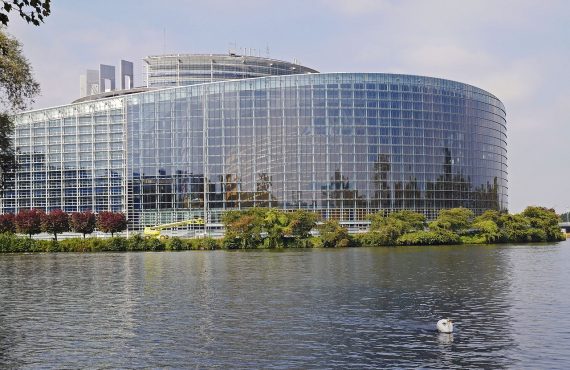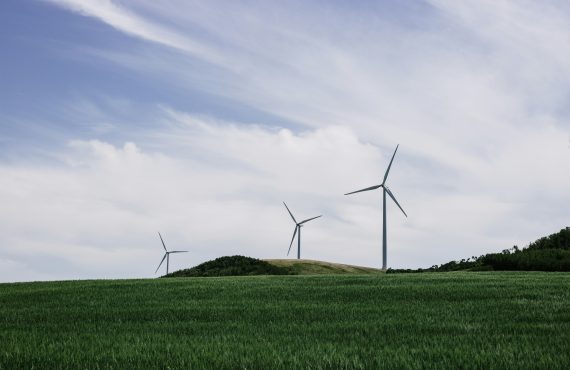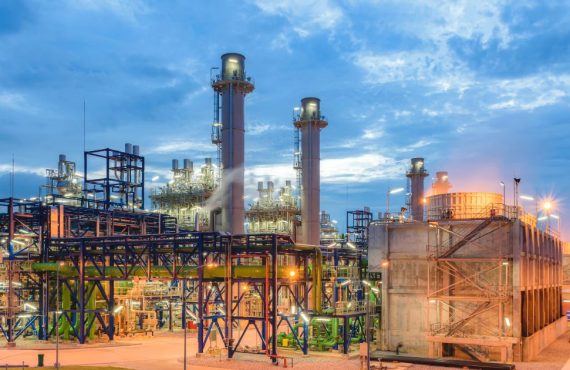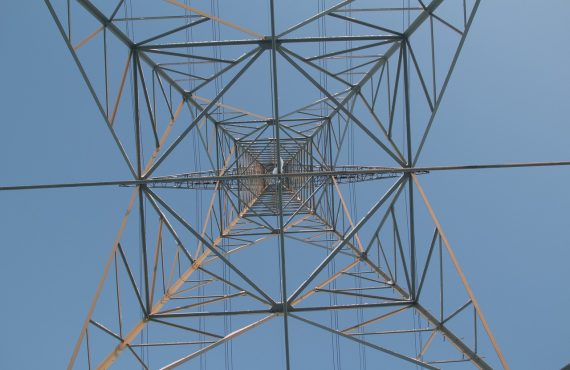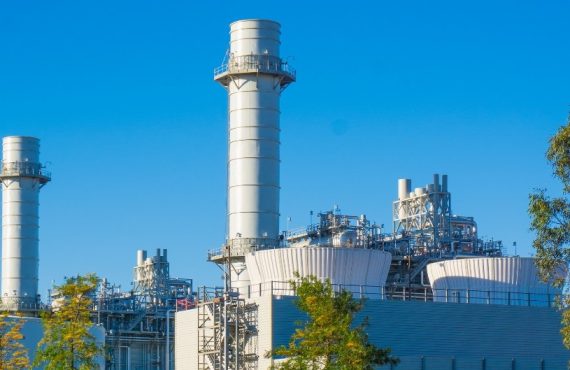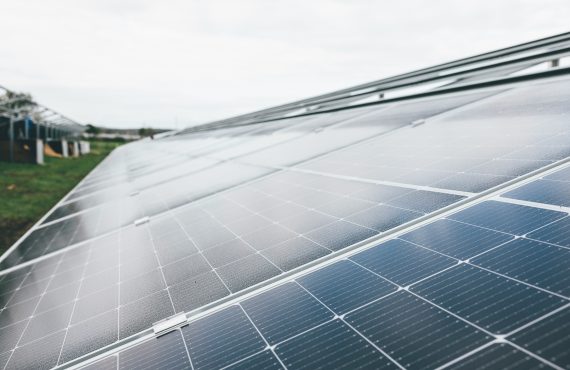The monthly emissions from each power plant in Greece are estimated based on the latest available electricity production data (April 2024 for the interconnected network and March 2024 for the non-interconnected islands) and those of the annual CO2 emissions from ETS (2023), as well as the methodology and assumptions presented here.
Carbon intensity of electricity production
Carbon intensity[1] is an important indicator of the decarbonization of the power sector. Low carbon intensity means a cleaner electricity production mix, decarbonized from the polluting fossil fuels.
The progress that has already been made can be seen from the large reduction in carbon intensity over the last decade. From 2013 – the year when the third phase of the ETS began, phasing out free carbon emission allowances for electricity production – until 2019, carbon intensity fluctuated above 500 g CO2/kWh. The highest annual average carbon intensity in the last decade was recorded in 2014 (875 g CO2/kWh).
However, 10 years later, carbon intensity is almost 3 times lower (315 g CO2/kWh), thanks to the great 80.6% reduction in lignite production between 2013 and 2023.
Progress continues into 2024 as the first four months of the year, the average carbon intensity fell further to 268 g CO2/kWh. April in particular was the month with the lowest monthly carbon intensity to date (236 g CO2/kWh), given that lignite production was very low and renewables had a high share. The second lowest monthly carbon intensity to date was in September 2023 (255 g CO2/kWh), when the second lowest lignite production (187 GWh) was recorded at least since the 1970s.
Emissions per fuel
In April 2024, emissions from electricity production plants fell below 1 million tonnes (0.94). This has only happened twice in the last decade (April 2022 and May 2023).
In total, in the first four months of 2024 an estimated 4.52 million tonnes of CO2 were emitted for electricity production. Emissions from fossil gas plants (2.06 million tonnes or 45.6%) exceeded those from lignite plants (1.77 million tonnes or 39.1%). The share of oil plants was much smaller (0.69 million tonnes or 15.3%).
Emissions from the electricity production sector decreased by 0.37 million tonnes or -7.6% in the first four months of 2024 compared to the same period in 2023. This is mostly due to the reduction in emissions from lignite (-0.74 million tonnes or -29.5%), which in turn was the result of a 26.9% decrease in electricity production from lignite plants.
On the contrary, emissions from fossil gas plants increased significantly (+0.38 million tonnes or +22.6%), due to the corresponding increase of 28.4% in electricity production from fossil gas. Finally, emissions from oil plants were much lower (-0.01 million tonnes or -1.5%).
Compared to the five-year average, total emissions in the first four months of 2024 decreased by 2.45 million tonnes (-35.2%). The decrease came from all three fuels, with the largest from lignite (-2.18 million tonnes or 55.2%). It is noteworthy that at the beginning of the five-year period (2019), emissions from lignite plants (6.78 million tonnes) were almost four times higher compared to the first four months of 2024. The second highest reduction in emissions was recored in electricity production by oil (-0.18 million tonnes or -19.9%), followed by fossil gas (-0.09 million tonnes or -4.1%).
Emissions per thermal power plant
In terms of the distribution of emissions among power plants, the lignite power plant of Agios Dimitrios retained the 1st place in the first four months of 2024, emitting 1.34 million tonnes of CO2 (75.7% of the total lignite emissions). In 2024, three of its five units (III-V), those covering the district heating of the city of Kozani, were in operation, while in April only unit V was in operation.
Ptolemaida 5 was the second top polluter (0.39 million tonnes), while Agios Nikolaos (0.36 million tonnes) fell to the 4th place, having been second in the first quarter of the year. The third lignite plant, Meliti I, had zero production in April for the second consecutive month and was in 21st place with 0.04 million tonnes.
The 3rd place in the ranking of the biggest polluters in electricity production was occupied by Megalopoli V, which emitted 0.37 million tonnes. Six other fossil gas plants followed in the top polluter list, while all fossil gas-fired plants accounted for more than 50% (53.8%) of the emissions from thermal plants in the country’s interconnected grid (lignite and fossil gas together).
In the non-interconnected islands, the three oil stations located in Crete (Aterinolakkos, Linoperamata and Chania) were the top polluters with emissions of 0.16, 0.13 and 0.07 million tonnes respectively in the first four months of 2024. Cumulatively, the top three polluting oil stations represent 51.9% of the total emissions in the non-interconnected islands. They are 10th, 12th and 14th respectively in the general ranking of all thermal power plants in the country in terms of emissions.
Emissions of PPC ‘s thermal power plants
PPC has made great progress in the last two years in terms of reducing CO2 emissions from its thermal plants. Ιn 2022 it succeeded in reducing emissions to 14.94 million tonnes, 35% less than the corresponding levels of 2019 (23.09 million tonnes), while in 2023 the reduction compared to the same base year exceeded 50% (-50.3%), as all of PPC’s thermal plants are estimated to have emitted 11.47 million tonnes[2].
Despite the fact that it slightly missed the targets reflected in the three bond loans introduced in 2021 to reduce the emissions of its thermal units by 40% in 2022 and 57% in 2023 compared to 2019 levels, PPC seems to remain committed to drastically reducing its carbon footprint. Specifically, in its new strategic business plan for the 2024 – 2026 period, presented in January 2024 at the Capital Markets Day in London, it committed to reducing emissions from its thermal plants to 5.9 million tonnes in 2026, a reduction of 75% compared to 2019 levels.
Assuming that the reduction in emissions from 11.47 million tonnes in 2023 to 5.9 million tonnes in 2026 is linear, an estimate of PPC’s annual carbon budgets for each year of the three-year period 2024-2026 can be made. The available budget for 2024 is estimated at 9.61 million tonnes.
In the first four months of the year, PPC’s thermal plants emitted 3.19 million tonnes, a 17.5% decrease compared to the same period in 2023. This reduction is more than double the corresponding percentage reduction recorded in the emissions of all thermal plants in the country (-7.6%). Therefore, PPC’s remaining carbon budget for the remaining 8 months of 2024 is 6.41 million tonnes, i.e. 66.8% of the total carbon budget for the year. Based on its climate performance in the first four months of 2024, PPC is marginally behind the target.
You can see the evolution of the electricity sector emissions since 2013, as well as read the analyses from previous months here.
[1] Carbon intensity is defined as the ratio of emissions from the three fuels (lignite, gas and oil, including CHP) to the country’s total electricity production from the interconnected grid and the non-interconnected islands.
[2] This value includes the emissions of all PPC thermal units recorded in the ETS in 2023 (9.73 million tonnes) and an estimate of the emissions of Ptolemaida 5 (1,735 million tonnes) that will be officially recorded in the ETS in the following years.




